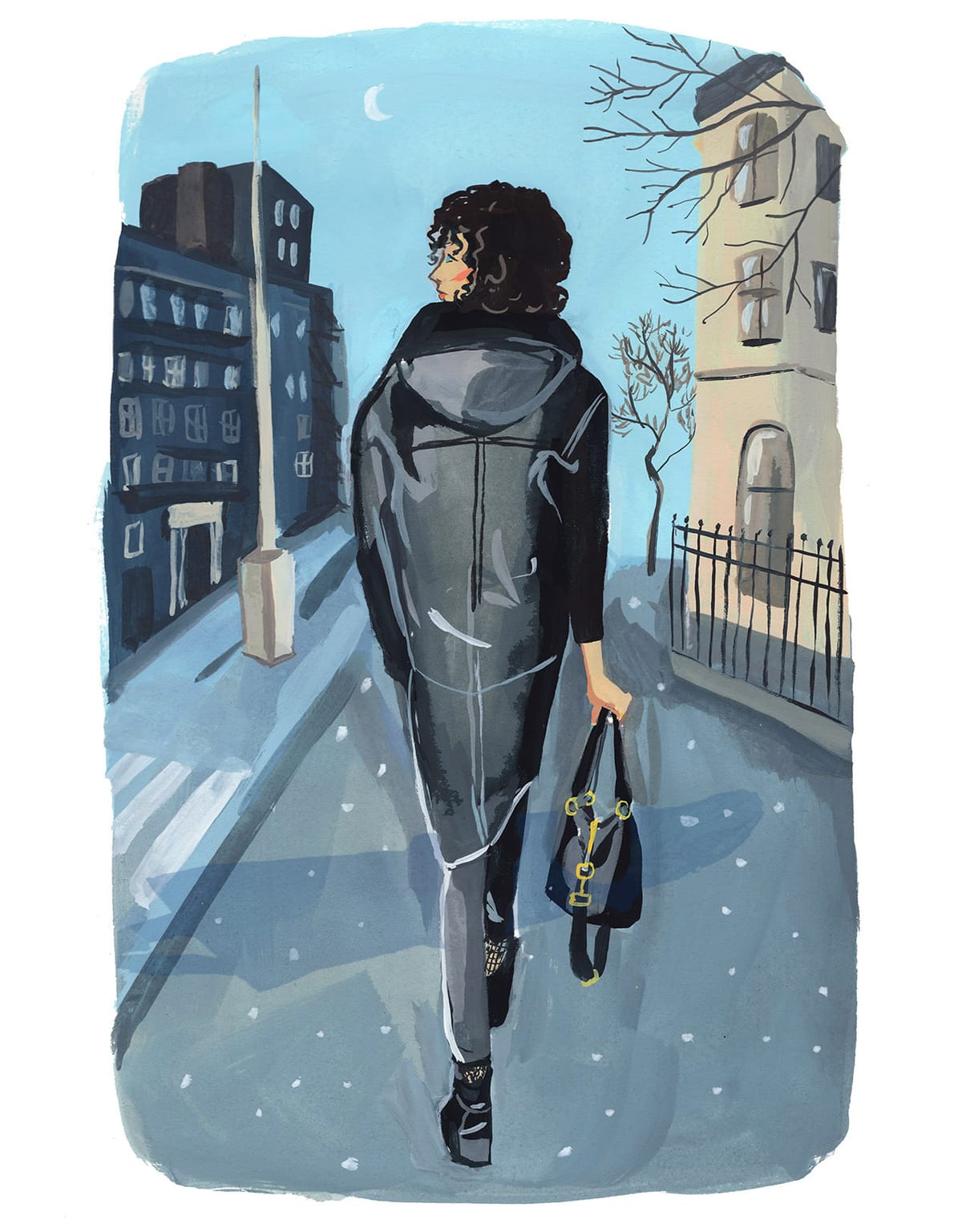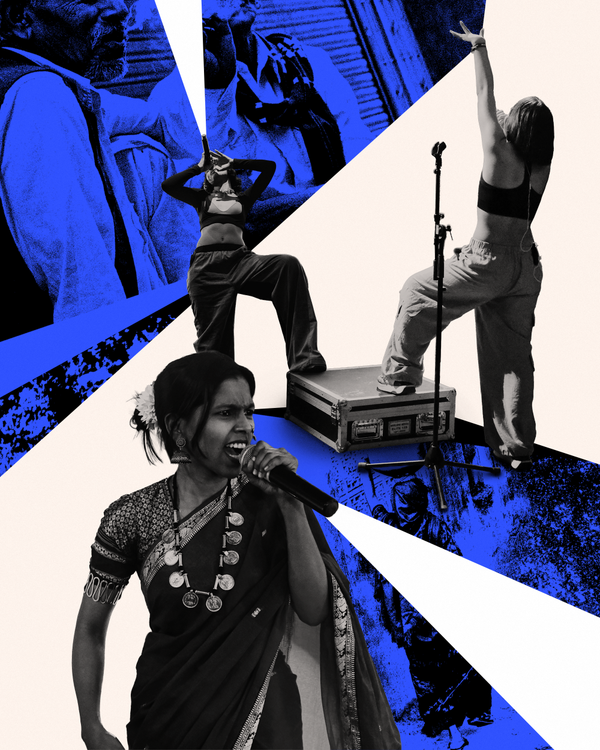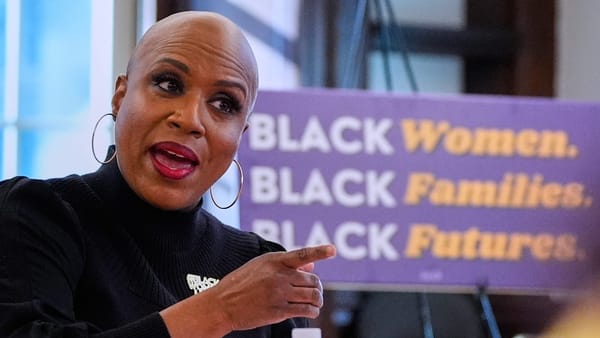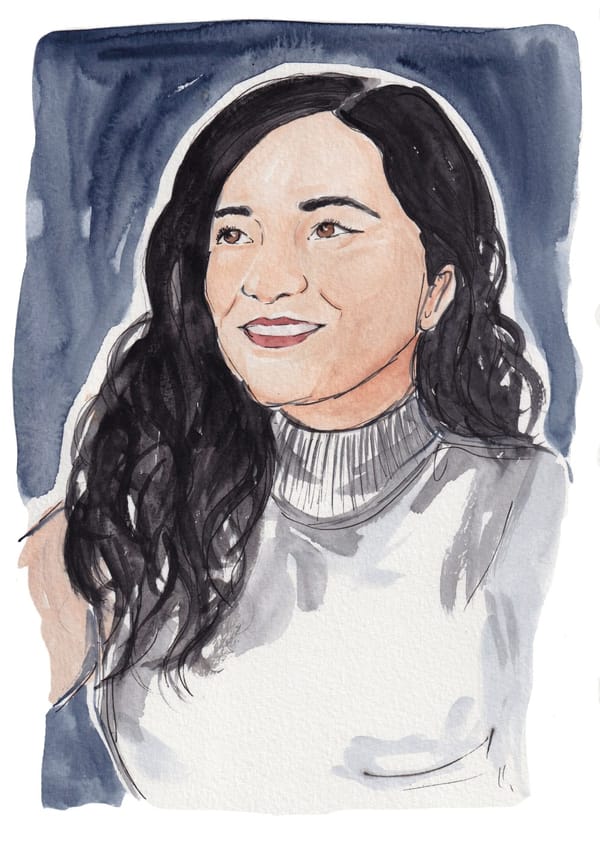Yes, Cities Can Be Sexist. Here’s How to Fix Them.
The idea that urban design can be discriminatory has become more established in recent years. Some city planners are making changes accordingly.

It wasn’t until she became pregnant and gave birth to her daughter that Leslie Kern realized cities hadn’t been designed with women in mind.
Growing up, Kern’s experiences as a teenager and young woman in Toronto certainly weren’t free of threat—the need to look after herself by taking certain routes or avoiding particular areas was ever-present. “But at the time, I was thinking about dangerous people, not the city as a whole,” she says.
It was only in 1999 in London, when Kern was trying to navigate the city with a baby and a pram, that the problems became evident. “Every time I tried to get on public transportation it was a huge struggle. And even though there were spots on the bus for mothers or disabled people or older people, day-to-day commuters would look at me like an alien, especially if I had the audacity to get on the bus at rush hour!” There were other issues too. “Finding a place to nurse and change a baby was suddenly very important in my life; and this was very, very difficult.”
“I suddenly realized, oh, the city is really trying to tell me, 'You’re a new mom with a baby; you should be at home.’”
'You’re a new mom with a baby; you should be at home.’
The idea that a cityscape can be sexist can be difficult to get one’s head around. How can a paving stone be a misogynist? It’s difficult to understand unless you experience it yourself. But in the last few decades, the idea that urban design can be discriminatory has become more established. Vienna and Barcelona are pioneers of gender-sensitive urban design and now, the French city of Nantes has pledged to become the country’s first “non-sexist” city by 2030.
Nantes’ latest budget has just been unveiled, with a focus on making public spaces safer and more inclusive. Indeed, since 2023, the council has been experimenting with “gender-sensitive budgets,” looking at how public spending, whether for urban design or cultural programming, affects men and women differently.
Marjorie Graffion, who works for the City of Nantes, says, “We dare to question all the practices that condition the existence of sexism in our city, in order to ultimately change them.”
So are cities really sexist? What does a city designed for women look like? And how can we get there?
Sexist Cities
Kern tells me, “cities have historically been designed by and for the people in power, and for the most part, that group has primarily been made up by men.” That moment on a London bus in 1999 got her interested in thinking about how urban environments help or hinder different groups. She went on to write a book on the topic, “Feminist City: Claiming Space in a Man-Made World.”
“Our cities are patriarchy written in stone, brick, glass and concrete,” said the feminist geographer Jane Darke, who Kern quotes in her book. This means, Kern explains, that “the needs, habits, routines and perspectives of those in power are the ones taken into account when designing everything from transit systems, to the placement of offices in relation to homes, to what gets prioritized in urban planning and budgeting.”
This has real consequences. In Jordan, one survey found that 47% of women had declined a job owing to a lack of suitable public transport and concerns about sexual harassment. Both men and women experience higher stress when they have less access to green space, but the effect on women is far greater. Women require toilets more often, and use them for longer periods of time, yet public toilets are rarely designed with women or other vulnerable groups in mind.
All of this means that the fabric of cities frequently exacerbates gender inequities. They are designed in ways that make women feel unsafe, overlook their basic needs, and restrict their social and economic opportunities.
One of the main ways to counter this is by talking to people in the community, and asking them what would enhance their safety and willingness to use spaces. Truly inclusive cities can only be built by involving women and other marginalized groups at every stage of urban planning, from design to implementation. So it’s encouraging to see the participatory approach that the city of Nantes is taking.
Over the past few months, the council has been conducting workshops with LGBTQ+ people in order to better understand their feelings, needs and expectations of the city, and carrying out field surveys asking those who frequent three key locations their experiences in the context of gender equality. “The objective was not to remake these spaces, but to go and observe what happens there in order to draw lessons from them overall,” Graffion says.
Feminist Cities
So what do feminist cities actually look like? This is hard to answer, but there are some common themes, including those Nantes is considering: improving the size of pavements, the presence of public seating and street lighting and adding more green space.
Increasing sidewalk width benefits pedestrians (a higher proportion of whom are women) by giving them more space—nice in itself, but especially important if you are pushing a pram or using a wheelchair. Adding benches benefits everyone, but particularly those who need to stop often—perhaps to breastfeed a child, or because they’re tired or in pain. Judicious use of street lighting helps vulnerable people feel more visible and safe.
In Barcelona, a series of “superblocks”—areas made up of nine blocks in which car travel is strictly limited—have been created. The lack of traffic has allowed for a huge increase in green space, play areas, and the availability of nice places to hang out. Data on how women travel, use public space and what they want out of their city informs their design.
In Vienna—one of the first cities to think about feminist urban design—parks across the city have been redesigned with women and girls in mind. Lighting was improved, more hang-out areas were added, wider paths created and more entrances added to play areas so girls were less likely to feel trapped. Areas that were previously dominated by men and boys are now used much more equitably.
These interventions are “an attempt to re-humanize the city,” says Kern. “Many cities have become very car-dominated for the last 60 years. Space for pedestrians has shrunk as space for cars and commercial spaces have grown.”
Re-Humanization
Gender-sensitive policies tend to attract a particular kind of backlash, especially in 2025. “Anything that can be seen to fall under the label of DEI is being not just dismissed but vilified,” Kern says. “It’s a daunting time to embark on this kind of work.” So how do we counter this?
“How do we make spaces that are better for people in general?”
Making the claim that cities are sexist can be a stumbling block. It’s very hard to see issues that don’t affect you. So although trying to get privileged groups to imagine moving through a space as a disadvantaged person is helpful, there may be better ways of making the case.
“The smoother approach might be to talk about a ‘re-humanization’ of the city,” says Kern. “How do we make spaces that are better for people in general?” Probably by asking them. And that involves asking a variety of people.
This isn’t about promoting a single feminist aesthetic or urban planning strategy. It’s about designing cities in a way that accommodates the diversity of people that use them—their various needs, worries, and desires. Doing so will make cities more vibrant and livable than ever.
What Can You Do?
In your community: Go to the park, go for a walk, hang out with friends in public areas – make public spaces the vibrant places we need them to be.
In your workplace: Speak to your colleagues about their experiences of design in the workplace, from toilets to office layout. Find some priorities for change and push for them.
In policy: Attend town halls and community meetings, fill out surveys, vote in participatory budgets.





